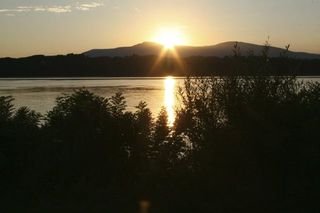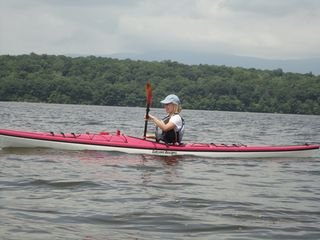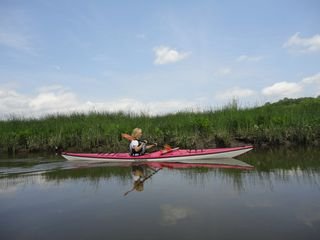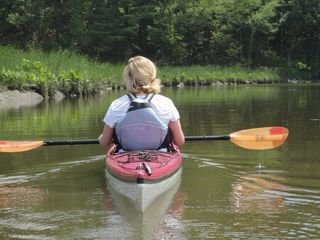MY REACH
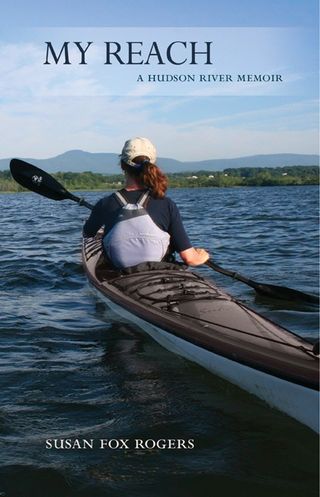
As I wait--patiently--for this first book to be published, I have given bound galleys to a set of wonderful friends. They have agreed to read the book, make comments, and then leave their impressions here for all to read (click on the "comment" tab below to read or to add comments). They then will pass the book on to another willing reader--perhaps someone I don't know (so not so biased). And in this way, I can imagine my book travelling into the world. Thank you for reading.
Susan
Here is my book. It will be published in September 2011 by Cornell University Press. Do click on the "My Reach" tab to see the wonderful, generous advance quotes for the book.
As I wait--patiently--for this first book to be published, I have given bound galleys to a set of wonderful friends. They have agreed to read the book, make comments, and then leave their impressions here for all to read (click on the "comment" tab below to read or to add comments). They then will pass the book on to another willing reader--perhaps someone I don't know (so not so biased). And in this way, I can imagine my book travelling into the world. Thank you for reading.
Susan
Solstice Adventures - Tell Me Your Stories

There are many ways to celebrate the solstice. In my mind, having an outdoor adventure is almost required. One year I slipped my kayak into the water before dawn to watch the sun rise while on the river. I paddled north for a few hours, then floated south with the outgoing tide. I was out of the water by noon and had spent eight hours on the river. Already a full day and yet another day’s worth of sunlight stretched before me. This year I intend to do the same: paddle out with the sun.
What I would love is to hear reader’s stories of adventures. Tell me of outdoor adventures you have had or what you intend to do tomorrow. Send your stories as a comment or as an email and I’ll post these to my blog (I am redoing my website; when I am done, there will be a reader’s tales of adventure section).
Tomorrow is June 21, the longest day of the year. When the sun is out or up for so long, I feel the need to celebrate, to be outdoors and play. This desire to take in every minute of sunlight is challenged in places like Alaska, where above the Arctic circle they have 24 hours of sunlight. It’s hard to get any sleep in the summer in Alaska—the sun is intoxicating. And, I think to of those who winter over in Antarctica in 24 hours of darkness.
There are many ways to celebrate the solstice. In my mind, having an outdoor adventure is almost required. One year I slipped my kayak into the water before dawn to watch the sun rise while on the river. I paddled north for a few hours, then floated south with the outgoing tide. I was out of the water by noon and had spent eight hours on the river. Already a full day and yet another day’s worth of sunlight stretched before me. This year I intend to do the same: paddle out with the sun.
What I would love is to hear reader’s stories of adventures. Tell me of outdoor adventures you have had or what you intend to do tomorrow. Send your stories as a comment or as an email and I’ll post these to my blog (I am redoing my website; when I am done, there will be a reader’s tales of adventure section).
Freedom on the River
Last week, The New York Times ran an article on boaters on the Hudson and how the security checks by federal authorities, state police, county sheriffs and the border patrol have multiplied. Being on a boat on the river is about freedom—to go where you want to go, to do what you want to do (except drink and boat). Most boaters are out there to be left alone, to be quiet while fishing, or enjoying the sun. So these patrols have boaters angry. Some so angry they are selling their boats. As a kayaker I can not be boarded. But I can—and have been—stopped. In 2005 I circumnavigated Manhattan with my friend Dawes Strickler. At the end of our tour, we were interrogated by the park police. What follows is an essay I wrote about that tour around Manhattan.
(this photo is a view of the Brooklyn Bridge from a kayaker's perspective)
(this photo is a view of the Brooklyn Bridge from a kayaker's perspective)
Last week, The New York Times ran an article on boaters on the Hudson and how the security checks by federal authorities, state police, county sheriffs and the border patrol have multiplied. Being on a boat on the river is about freedom—to go where you want to go, to do what you want to do (except drink and boat). Most boaters are out there to be left alone, to be quiet while fishing, or enjoying the sun. So these patrols have boaters angry. Some so angry they are selling their boats. As a kayaker I can not be boarded. But I can—and have been—stopped. In 2005 I circumnavigated Manhattan with my friend Dawes Strickler. At the end of our tour, we were interrogated by the park police. What follows is an essay I wrote about that tour around Manhattan.
(this is a photo of me, still looking happy and rested!)
Protecting My Freedom
To kayak around Manhattan is a perverse endeavor: for over ten hours you splash through otter-brown water, and struggle with strong currents while dodging water taxis and large cargo ships. The turbulent water soaks your hands and stings your face and it does not smell of anything familiar, and certainly of anything natural. The uncomplicated pleasures of sea kayaking—the sight of a heron taking flight, the tranquility of an eddy, the vision of a bass cruising through clear water—are absent. To kayak around Manhattan is a meeting of the slow with the fast, the small with the large, the pure with the impure. So what would compel a kayaker to struggle with tricky tides and currents offshore of an indifferent island? The answers are simple: Because it is there, and because she can.
On a Sunday afternoon the phone rang: “I hear you want to paddle around Manhattan,”Dawes said. “You’re in luck, I’m going tomorrow.” June 20th was a good day to go: the high tides near the solstice create strong currents. Those currents would help scoot us along our thirty-four mile circumnavigation.
I am not sure why Dawes assumed I was capable of this day-long venture, which is a crown for kayakers in the Hudson Valley. People plan and train for months. “You know how to self-rescue, right?” he checked. “Sure,” I swaggered. I’d learned the day before in a paddling class. Dawes did not need to know that. With my new paddle float and pump strapped to my red fiberglass boat I looked like the real deal.
At 2:30 the next morning I rose after a sleepless few hours during which I imagined in vivid detail my watery demise. The middle-of-the-night departure made me feel as if I were off on a special and dangerous mission. By six we were unloading our sleek kayaks at Liberty State Park in New Jersey. The sky, already a watery white-blue, brought into silhouette several men with fishing poles, standing serene on the ragged dock. Near the shoreline a hearty jellyfish bobbed in the water where we loaded our boats with extra clothing and food—a stack of peanut butter sandwiches, Gatorade and a thermos of tea. The weather appeared clear; the forecast was the same. But you had to be prepared for anything.
Unceremoniously, we pushed off, stroking toward the sun on our odd but very American adventure. American because all that this journey required was a boat, some determination, and that marvelous sense that this land and water were there for me to enjoy. We could have imitated Huck Finn and thrown a wooden raft out onto these complicated waters and no one could tell us not to. I delighted that we were so free to move as we wanted and did not need a permit, did not have to register, and did not have to pass an exam to show that we were qualified for this journey. And there stood the Statue of Liberty, soaring high as if emerging from the water that buoyed us up, to echo my thrill.
Before us stretched the wide expanse of New York harbor. I did not want to leave the seeming comfort of shore, so I traced to my right, toward the solidity of the Statue of Liberty. “Pay attention to the buoys,” Dawes called, his voice swimming off across the waves that separated us. A few white buoys marked a wide birth around the Statue, a watery security zone. He nodded toward another girdle of buoys around Ellis Island. “Remember that on our return.” The buoys seemed innocuous, white dabs in the water to guide not defend or ward away.
We ventured into what felt like the ocean, the waves following a deep pattern of rise and swell made unpredictable by the wake of dozens of ships. Dawes and I moved side by side, our light fiberglass paddles flashing in the sun, a warning to larger craft that we were there. Paddling with Dawes gave me a certain confidence. He teaches rock climbing at West Point, and when he speaks no words are wasted. Before leaving he had traced our route on the chart. “This is our mission,” he said, echoing my own sense of purpose.
Crossing the Harbor frightened me. Again and again large boats appeared to aim for us but my scale was off; only once did we have to stop paddling and wait for the large orange State Island ferry to pass. The large ships were less of a threat than the fast yellow water taxis whose wakes sloshed us about. But soon my fear was diverted by the New York skyline, which, viewed from low on the water against a new sky appeared crisp and magical. We made a line for the tip of Manhattan and soon enough we were crossing under the Brooklyn Bridge, which Dawes explained is made from Rosendale cement, the toughest cement in the world. I admired the solid, uncracked foundation of the bridge and despite my own precarious bob, felt the security of the world in that cement.
The East River welcomes a range of boats, barges and tugs. Water planes landed behind us; helicopters dropped onto landing pads in front of us. All this busyness seemed mockingly unaware of our presence. Our slow pace allowed us to notice men on shore performing tai chi in the early light, and a lone fisherman hoping for something to grab the end of his pole. I realized that I was looking at the belly of the city: from these docks everything comes and goes. The belly is a vulnerable spot. But there were no security zones as we stroked north, past the U.N. building, past the lives of thousands of people, many still sleeping.
Just before Roosevelt Island there emerged an anomalous piece of undeveloped land, with a metal tower and a metal arc, which looked like a miniature, faded amusement park. On the wiring, cormorants draped, perhaps nesting. The scene struck me as menacing, or freaky, a meeting of the natural and unnatural. But nothing about the brilliant day seemed ominous, except for my dreams of the night before. My over stimulated nerves calmed as I realized that the images of floating dead rats or a current that could suck me under were only the work of my imagination.
At nine, two and a half hours into our trip and at the end of the flood current, we stopped for a half hour snack on Mill Rock. “This is a funny little oasis,” Dawes said. Smothered in gulls and all their waste, it was a dubious rest, but the twenty minutes out of the boat were welcome. North of Mill Rock, the traffic on land thinned out and the water calmed. A man strolling on a narrow walkway looked at me, then his perception shifted and his face spread into a smile. “Hey,” he said. Another woman leaned over a pedestrian bridge and called, “Travel safely.” We passed the Roberto Clemente park and kids waved at us, called hello as if we were an attraction in a watery parade.
A sanitation dump appeared on the far shore, the white trucks lined up, ready to unload their day’s catch. The smell, settling hard over the water, overwhelmed us and renewed our energy to slide along as quickly as possible. But that, I realized was the greatest offense of the day. All of the horror stories I had heard were exaggerations, or perhaps fictions.
North and west, we moved in the slack tide, admiring a swatch of soot-blackened Inwood marble, and the Columbia boathouse. In the five hours it took us to reach the railroad bridge into the Hudson, we had had a seamless trip. We settled in the shade on a spit of sandy soil to wait for the ebb flow. An exotic pigeon with white feathered feet landed, hoping for a handout. I fell asleep for about fifteen minutes and woke abruptly to the sound of a bell ringing and then the bridge swinging open to let through a boat. The water lapped the shore as if I were on a beach some place really scenic. I sat up, and Dawes pointed out some barn swallows feeding their baby. On a rock nearby someone had written: This place can get pretty dark…Especially when wrong was done!!!
The Hudson was wide, smooth and empty. We rolled down the middle of the River, the George Washington bridge spanning high overhead, and hit a record seven miles an hour. We passed markers from my past life: my apartment at 158th street, Grant’s tomb, so near my grad student apartment, the 79th street boat basin where I loitered after work through the mid-eighties. We gloated in our good fortune. I should have known better; on water, hubris is a dangerous thing. It causes waves to emerge. In this case the waves surged from the south, fast and without warning to remind us of our small place in this world. Within minutes the calm became a turbulent sea, waves crashed over the bow of my boat and the wind nearly ripped the paddle out of my hands. I lost sight of Dawes in the trough of the waves, but with or without him, I wanted to work my way toward shore. Waves smashed up against the piers and when I looked up I could see people sitting there, sipping drinks. They looked so calm, so relaxed. They waved. Could they not see my distress, that I felt like a cork in the ocean and was unable to wave back. If I had hesitated in my strokes I would have been turned broadside to a wave and undoubtedly rolled over. Perhaps I should have taken more caution after my dreams.
(This is a photo of Dawes, refeuling.)
Dawes waited in the eddy of a pier. “We have to cross,” he said. I dreaded this, the wide crossing of the Hudson, near to several taxi piers, and then the passage back into the deep water of the harbor. I wanted to give in to my fatigue and my fear but there was no way out, no ride home, no person to take my load. I had to keep moving. I kept the back of Dawes’ boat in view, knowing that if I lost my grip on him I would float off, give in to the waves, be swept north, or under. A few times I called to him to wait, but my voice was carried off in the wind. And then through the simple, determined, repetitive gesture of one stroke after another, I was rounding Governor’s Island. Wanting to take the shortest distance and stay close to land, I nudged next to Ellis Island. I felt an odd security by hugging the flank of this place that thousands before me had also seen as a haven, though for different reasons. I was not, though, thinking much about them or the past, but only the near future when I would pull my boat out of the water and, nearly beaten but triumphant, sit down and rest.
I was near tears with exhaustion when out of the corner of my eye I spied a white boat pass, then circle back toward me. No, I thought, not the police. “Ma’m, where are you going?” His voice carried across the slosh of waves and the roar of wind. The boat produced a wake that catapulted me toward the stone wall. I swirled, stayed afloat, and, without looking over called back, “Liberty State Park.” If I get there. In a vague eddy, they rounded up Dawes, who held the side of the police boat, while I clutched his boat and we all rolled in unison, the words Park Police in bold black veering in and out of focus. With the right number of “yes, sir’s” Dawes explained that we knew of the security zone, but we couldn’t see the buoys, and even if we had, it would have been dangerous for us to pass to the outside of them.
We had breached federal security. We had trespassed. We had violated the law. The circumstances did not matter. The officer took our information—name, birthdate, and address— and we paddled along while their boat tagged behind our excruciating slow pace. After twenty minutes the boat approached me. “Ma’m we can’t find you,” he called out. “I promise, I exist,” I said. “What?” Grateful he hadn’t heard me, that my tone that said, what you are doing is absurd, was lost to the waves, I shrugged. “Were you really born in 1961?” There are many things worth lying about; there are many times when lying is tempting. This was not one of those moments. “Yes,” I said, almost an apology.
For the next forty-five minutes the white boat chugged alongside our weary pace. With every stroke my indignation rose. Wasn’t that broad-shouldered policeman supposed to be protecting me? What if during the time they spent following us a real threat emerged? What is clear about the attacks in the past four years (from 2001-2004) is that people are being killed and mostly in places where there is a density of human life: subways or trains, office buildings; Ellis Island contains approximately thirty-six building, and one, the museum, is open to the public.
In calmer waters near shore, the officer, stocky with a slick shaved head, handed over a fifty-dollar fine: violated security zone. He could have fined us more stiffly, he explained. I couldn’t hear everything he said but caught “Greatest symbol of freedom in the world.” Stunned, I shoved the ticket into a dry bag. I knew that this was the moment I would remember most vividly, not the rigorous freedom I had experienced throughout the day. But it wasn’t simply a childish sense of you ruined my fun that made that ticket sting. In my tattered state I understood that they were protecting a symbol of freedom, and that is not the same thing as freedom itself, which is not an idea but a person bobbing in a kayak doing something very American, because she can.
Alice on the River

Alice is my niece, my only niece. She’s twenty years old, a beautiful young woman who loves her friends and family, is completely bilingual (French-English), is first in her law class at King’s College, shops too actively, plays a wicked game of O Hell, and for the past week of vacation had been calling me “la Suse,” and singing “Delta Dawn, what’s that flower you have on?” (go on, listen to it!) inspired from watching reruns of Friends. That moment on the street reminded me how fragile all of this is, and it was with this keen awareness that we made our way toward the river.
It was a sunny day, with a bit of breeze. The tide was going out. The river, a half mile wide at this point, felt enormous. The Catskill Mountains on the far shore looked hazy and far away. I sensed Alice a bit nervous about this adventure. We put the boats in the water, and I straddled hers, steadying it as she slipped in with flexible ease, reminding me she spent years perfecting gymnastic moves. I explained how to hold her paddles, to keep her elbows low, to press her knees against the pads to steady her boat and to help guide it through the water. Most of these moves come naturally to someone in a boat, but a few pointers make for an easier paddle.
It was a simple enough request: Alice, run this postcard over and drop it in the mail box. I pulled the car over; Alice jumped out, and ran across sleepy Broadway in downtown Tivoli. It was around 10 on a Friday morning. We were off to kayak on the river, a first outing for her, both in a kayak and on the Hudson. She turned, looked right instead of left to cross the street—Alice has been studying in London for the past two years—and stepped in front of an oncoming pick up truck. I will ruin the suspense by saying she’s fine. The pick up wasn’t that close, wasn’t moving that fast. Alice sprinted across the street—she’s young and agile. But I will say that, four days later, I’m still shaken.
Alice is my niece, my only niece. She’s twenty years old, a beautiful young woman who loves her friends and family, is completely bilingual (French-English), is first in her law class at King’s College, shops too actively, plays a wicked game of O Hell, and for the past week of vacation had been calling me “la Suse,” and singing “Delta Dawn, what’s that flower you have on?” (go on, listen to it!) inspired from watching reruns of Friends. That moment on the street reminded me how fragile all of this is, and it was with this keen awareness that we made our way toward the river.
It was a sunny day, with a bit of breeze. The tide was going out. The river, a half mile wide at this point, felt enormous. The Catskill Mountains on the far shore looked hazy and far away. I sensed Alice a bit nervous about this adventure. We put the boats in the water, and I straddled hers, steadying it as she slipped in with flexible ease, reminding me she spent years perfecting gymnastic moves. I explained how to hold her paddles, to keep her elbows low, to press her knees against the pads to steady her boat and to help guide it through the water. Most of these moves come naturally to someone in a boat, but a few pointers make for an easier paddle.
I have taken many people onto the river. I consider it one of the most beautiful things to do in a beautiful area. Being on the river, low in a boat, paddlers experience things they would not if they stayed on shore: the great blue heron taking flight, it’s long legs trailing behind its massive wings; the slap of a fish leaping from the water; the musky smell of river water. On the water, the sky expands, as if you can see to infinity. There’s hope on the river, and plenty of room to drift and dream.
Still, I’m always a bit tenuous taking out new paddlers, but this time I was silently cataloging all of the many things that might go wrong. “We’ll stay near the shoreline and head south,” I said. In this section of the river, the channel used by the large freight boats and barges run close to the eastern shore. I wanted to stay far clear of them. But truth was, it was an empty river, not a boat in sight. We shoved south, with the wind at our back pushing us along.
“Are you ok?” I asked, once we had settled into our journey.
“I’m worried about going over,” Alice said.
“Don’t, you’ll fall out of your boat and the life vest will pop you to the surface,” I explained.
“I won’t get stuck?”
I remembered my own worry when I first started paddling. What if I went over, and couldn’t extract myself from my boat? So I spent a lot of time ensuring I did not go over. And then I took a terrific paddling class with Atlantic Kayak Tours during which we were required to dump. This is like asking a rock climber to fall. I took a big breath, rocked back and forth, and fell into the water. The body knows how to survive. I reached for the toggle of the spray skirt, pulled, dropped out of my boat and was back to the surface in seconds. I can’t say it was fun, but I knew that I could survive going over. The fear of not knowing was over and I paddled with a new confidence.
As we approached the underpass to the North Tivoli Bay, I could see the outgoing current running strong.
“OK, let’s set up to make it under the bridge,” I said. We pointed into the current, paddled strong. But the current grabbed the bow of Alice’s boat and pushed her to the side, into me, into the supporting wall.
“Let’s try again,” I said, as we floated back out with the current. “Really lean into the right side of your boat, push with your knee,” I coached.
Alice took off, all determination, leaning, stroking.
I cheered as she floated into the serene wide bay.
Arriving in the bay is like turning off a switch, cutting off both wind and current. Alice settled into the seat of the kayak and smiled. We meandered through the spatterdock, emerging with the outgoing tide, through the cattails and the phragmites. I noted that a beaver lodge had been dismantled (by whom?), and we saw a snapping turtle sunning on a log. It slid into the water as we approached. I heard marsh wren, swamp sparrows, hundreds of red winged black birds.
“You want me to tell you what the birds are?” I asked.
“No,” she said and I smiled.
We wound our way home, passing two young women working for the DEC. They wore waders, and wide-brimmed hats.
“We caught a pumpkinseed,” the one reported, smiling.
I stroked over and admired the fish. “Come look, Alice,” I called.
“I can’t turn,” she called back cheerfully.
Our return was peaceful under a full noon sun. Alice took the lead as I daydreamed, my worries calmed by Alice’s strength on the water. There are dangers to kayaking on the Hudson but most of those dangers can be avoided. And the pleasures, like the sky, are infinite. We loaded our boats, a bit hungry but happy.
“That was fun,” Alice proclaimed, “if a bit scary.”
The only thing that went wrong on our paddle is the next day Alice when reported sore shoulders.

